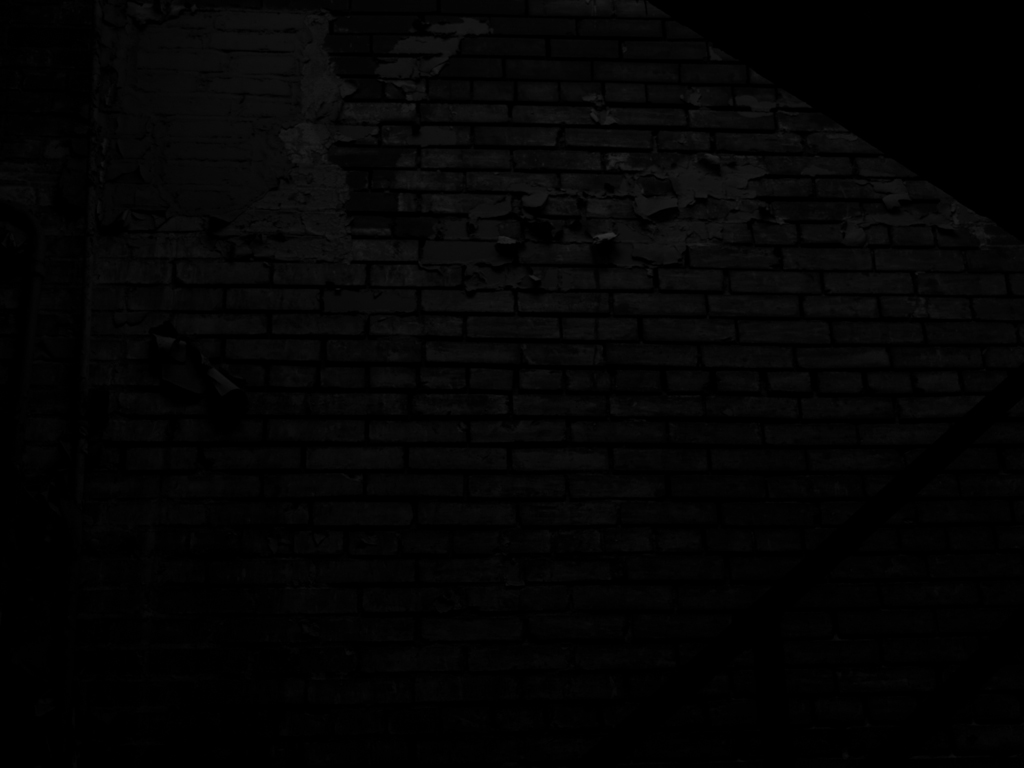

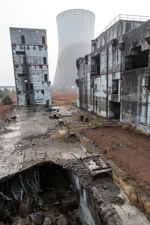 Construction on the Nuclear Power Plant began in the mid 1970's but was cancelled by the mid 1980s. Thus, the plant was never operational. Total cost to build this, only to abandon it before it was completed, was approximately 2 Billion dollars.
Construction on the Nuclear Power Plant began in the mid 1970's but was cancelled by the mid 1980s. Thus, the plant was never operational. Total cost to build this, only to abandon it before it was completed, was approximately 2 Billion dollars.
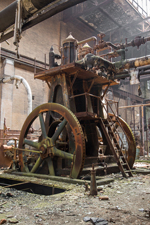 The Armour Meat Plant was once at the center of a large conglomeration of stockyards and slaughterhouses. Farmers from all around would visit the stockyards for the buying and selling of cattle and other livestock. In the first half of the 20th century, this was one of the busiest such locations in the United States.
The Armour Meat Plant was once at the center of a large conglomeration of stockyards and slaughterhouses. Farmers from all around would visit the stockyards for the buying and selling of cattle and other livestock. In the first half of the 20th century, this was one of the busiest such locations in the United States.
The East Saint Louis stockyards were devised to compete with the larger firms already well established in Chicago. The first shipment of cattle had arrived at the stockyards in 1873. By the turn of the 20th century...
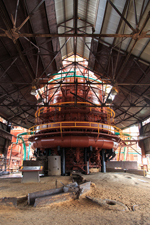 Sloss Furnaces was founded in Birmingham Alabama in 1880 by one of the founders of Birmingham itself, Colonel James Withers Sloss. The Furnaces began operating in 1882 as a "pig iron" blast furnace and was the first blast furnace in Birmingham. In its first year it produced 24,000 tons of high quality iron. James Sloss retired in 1886 and sold the company.
Sloss Furnaces was founded in Birmingham Alabama in 1880 by one of the founders of Birmingham itself, Colonel James Withers Sloss. The Furnaces began operating in 1882 as a "pig iron" blast furnace and was the first blast furnace in Birmingham. In its first year it produced 24,000 tons of high quality iron. James Sloss retired in 1886 and sold the company.
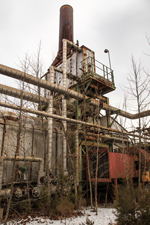 The Chemical Plant was constructed in the 1960s as one branch of the chemical division of a larger manufacturing company, which had been in operation for over 100 years. In the mid 1980s, this chemical division was incorporated as its own separate company. The newly formed company, however, would not last two decades before declaring bankruptcy. Shortly thereafter, it was bought out by a competitor. This plant, having been in violation of safety codes by this time, was shut down.
The Chemical Plant was constructed in the 1960s as one branch of the chemical division of a larger manufacturing company, which had been in operation for over 100 years. In the mid 1980s, this chemical division was incorporated as its own separate company. The newly formed company, however, would not last two decades before declaring bankruptcy. Shortly thereafter, it was bought out by a competitor. This plant, having been in violation of safety codes by this time, was shut down.
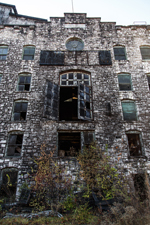 "Brewery X" was founded in the early 1800's. It seems that the brewery was abandoned in the 1980s, though it was likely not in use for some time before that. It borders an active brewery, the one that bought it out, and is therefore very difficult to access.
"Brewery X" was founded in the early 1800's. It seems that the brewery was abandoned in the 1980s, though it was likely not in use for some time before that. It borders an active brewery, the one that bought it out, and is therefore very difficult to access.
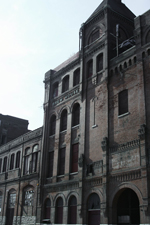 This location was originally Wm. Stumpf's Brewery and was constructed in 1853. Stumpf remained throughout various partnerships and acquisitions until 1877 when the short-lived Thamer Brewing Company took over. Two years later, Anton Griesedieck came into the picture, but ownership would revolve around between The Miller Bros, The Saint Louis Brewing Association and the Consumers Brewing Company before finally returning to the Griesedieck Bros. In 1920, Joseph Griesedieck approached his good friend...
This location was originally Wm. Stumpf's Brewery and was constructed in 1853. Stumpf remained throughout various partnerships and acquisitions until 1877 when the short-lived Thamer Brewing Company took over. Two years later, Anton Griesedieck came into the picture, but ownership would revolve around between The Miller Bros, The Saint Louis Brewing Association and the Consumers Brewing Company before finally returning to the Griesedieck Bros. In 1920, Joseph Griesedieck approached his good friend...
 "The USS Inaugural (AM-242) was an Admirable-class fleet minesweeper. The Admirable class was the largest and one of the most successful classes of U.S. minesweepers ordered during World War II. Inaugural was launched on 1 October 1944, and was commissioned on 30 December, with Lieutenant John H. Pace USNR in command.
"The USS Inaugural (AM-242) was an Admirable-class fleet minesweeper. The Admirable class was the largest and one of the most successful classes of U.S. minesweepers ordered during World War II. Inaugural was launched on 1 October 1944, and was commissioned on 30 December, with Lieutenant John H. Pace USNR in command.
The ship was decommissioned in 1946 and set up as a museum ship in St. Louis, Missouri in 1968...
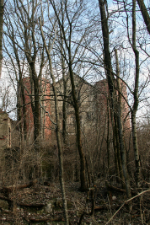 This farm was the oldest and largest of its kind, from the time of its founding in 1887, to the time it was sold to a competitor in 1989. Throughout this time, the farm remained under control of the original family. The 1989 acqusition added $60 million of annual revenue.
This farm was the oldest and largest of its kind, from the time of its founding in 1887, to the time it was sold to a competitor in 1989. Throughout this time, the farm remained under control of the original family. The 1989 acqusition added $60 million of annual revenue.
The farm was abandoned by 1989 at the time the company was sold. The family's homestead remains nearby, abandoned as well.
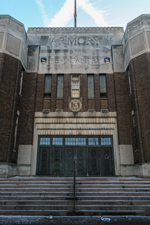 The National Guard Armory was erected in 1937. It went into service in 1939 as the Headquarters of Saint Louis' own 138th Infantry.
The National Guard Armory was erected in 1937. It went into service in 1939 as the Headquarters of Saint Louis' own 138th Infantry.
This building was used, like the other armories, for the purpose of storing ammunition and equipment as well as training soldiers. It remained in use from the time of its initial entry into service in 1939 up until some time in the mid 1960's. The below-ground parking garage housed tanks and other heavy equipment during this time. The building was operated by the 138th as late as 1963...
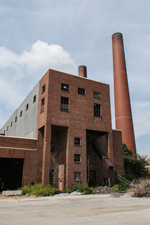 This Industrial site was built in the 1950's for incinerating the waste of Saint Louis. It remained in operation until the mid 1980's, its last inspection having occurred in 1984. Since the time of its closure it was temporarily used as a garage and storage facility for the Refuse Division. It has since been abandoned completely and fenced off.
This Industrial site was built in the 1950's for incinerating the waste of Saint Louis. It remained in operation until the mid 1980's, its last inspection having occurred in 1984. Since the time of its closure it was temporarily used as a garage and storage facility for the Refuse Division. It has since been abandoned completely and fenced off.
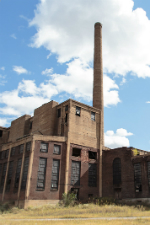 I've searched high and low and have not been able to determine with certainty was this place was originally. I suspect it was an incinerator, based on the large hoppers and dual stacks (as compared to a known incinerator). But this is a guess. Currently and, as it seems to have been the case for the past several years, it was used a rubber scrap facility. Its original purpose had been forgotten long before any clues could have wound up on the internet. Even the EPA merely lists it generically as "Former Industrial Site".
I've searched high and low and have not been able to determine with certainty was this place was originally. I suspect it was an incinerator, based on the large hoppers and dual stacks (as compared to a known incinerator). But this is a guess. Currently and, as it seems to have been the case for the past several years, it was used a rubber scrap facility. Its original purpose had been forgotten long before any clues could have wound up on the internet. Even the EPA merely lists it generically as "Former Industrial Site".
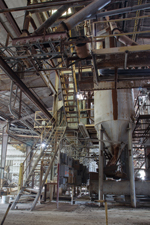 The Brick Factory began running its first kiln in March of 1919 and soon expanded significantly, running a large and successful business for nearly 100 years before dissolving in 2006. The last products from the assembly line still sit gathering dust to this day.
The Brick Factory began running its first kiln in March of 1919 and soon expanded significantly, running a large and successful business for nearly 100 years before dissolving in 2006. The last products from the assembly line still sit gathering dust to this day.